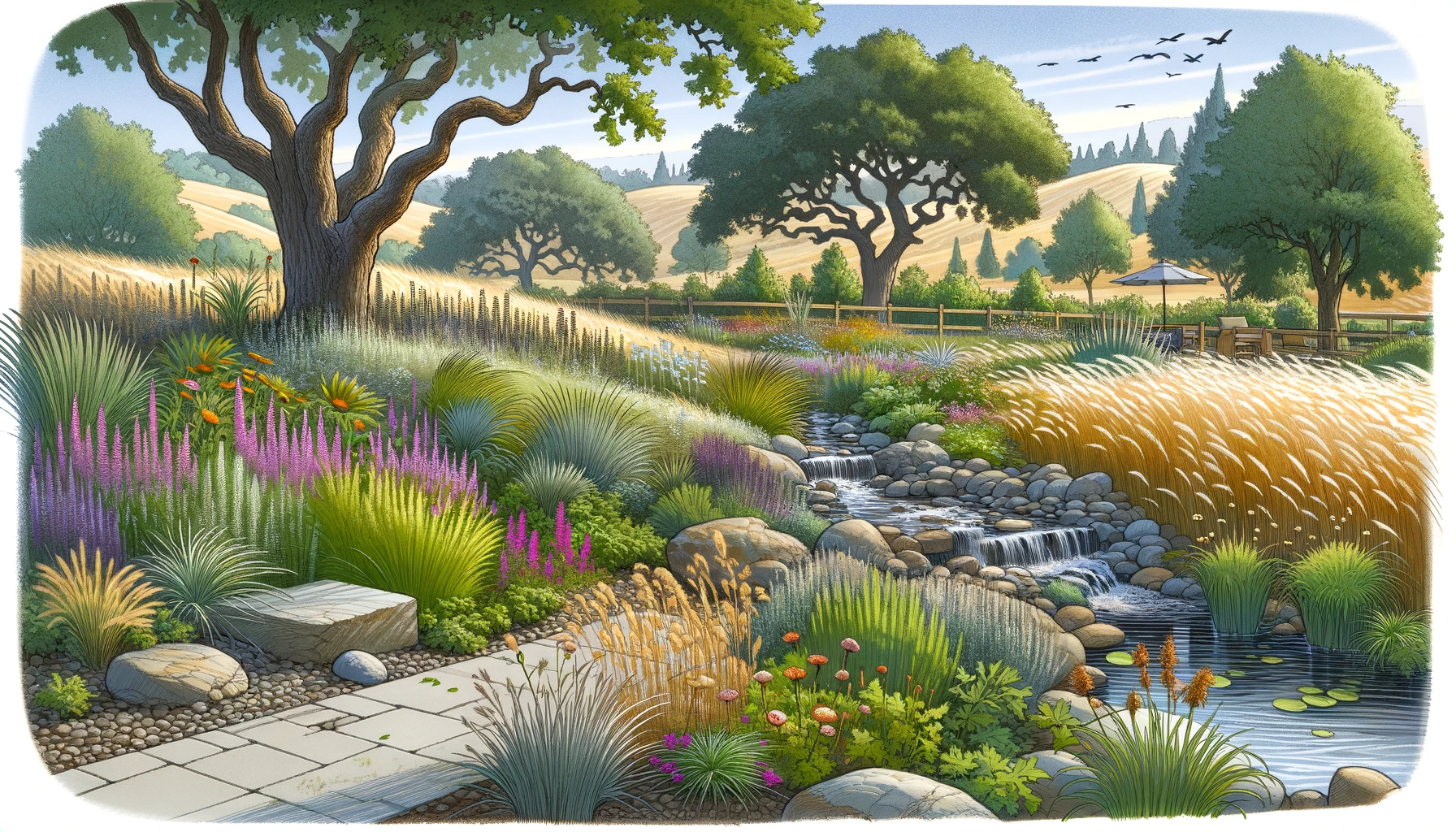Creating a natural landscapes using sustainable techniques not only enhances the beauty of your outdoor space but also helps promote biodiversity and protect the environment. By incorporating safe and eco-friendly practices, you can create a harmonious balance between your garden and the ecosystem around you.
Here are eight safe ideas for natural landscapes that you can implement in your sustainable landscaping project.
1. Native Plant Selection:
Selecting native plants is crucial for creating a resilient and sustainable landscape. Native plants are well-adapted to the local climate and wildlife, requiring less water, fertilizer, and maintenance. They also provide food and habitat for native birds, insects, and pollinators.
2. Rainwater Harvesting:
Collecting and reusing rainwater is an excellent way to conserve water and minimize runoff. Install rain barrels or cisterns to capture rainwater, which can then be used for irrigation or watering plants during dry periods.
3. Organic Soil Management:
Avoid the use of chemical fertilizers and pesticides in your landscape. Instead, focus on building healthy soil through the use of compost and organic matter. This enhances soil fertility, promotes beneficial microbes, and reduces the need for synthetic inputs.
4. Use Integrated Pest Management (IPM):
Practice IPM techniques to manage pests effectively and responsibly. This involves using natural pest control methods such as companion planting, beneficial insects, and physical barriers to prevent pest damage.
5. Mulching:
Mulching not only helps retain soil moisture but also suppresses weed growth. Use organic mulch, such as wood chips or straw, to conserve water, regulate soil temperature, and improve soil health.
6. Low Maintenance Design:
Opt for a low-maintenance landscape design that reduces the need for excessive watering, mowing, and pruning. Incorporate native groundcovers, succulents, and other drought-tolerant plants that require minimal upkeep.
7. Create Habitat and Wildlife-friendly Features:
Integrate features that attract and support wildlife, such as bird feeders, butterfly gardens, and bird baths. Planting diverse native species and providing nesting sites can help sustain local biodiversity.
8. Practice Responsible Watering:
Water your landscape efficiently by utilizing water-wise irrigation techniques. Install drip irrigation systems or water-efficient sprinklers that deliver water directly to plant roots, minimizing evaporation and runoff. Additionally, water your plants during cooler hours to prevent water loss due to evaporation.
By adopting these safe and sustainable ideas for natural landscapes, you can create an inviting and eco-friendly outdoor space. Not only will you enjoy the aesthetic benefits, but you will also contribute to the overall health and well-being of the environment. So, why not transform your garden into a haven for native flora and fauna while reducing your carbon footprint? Start making a positive environmental impact today!

